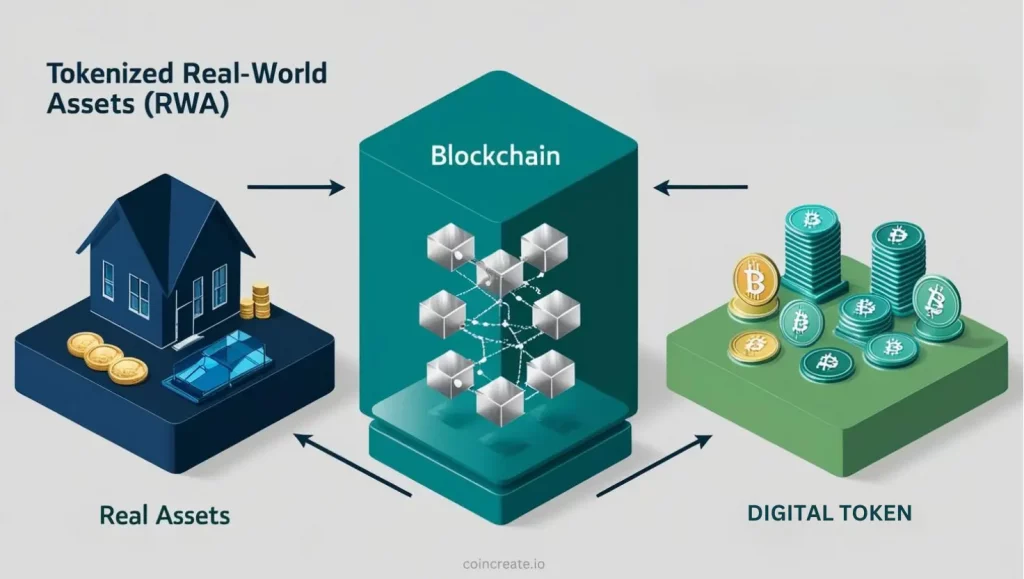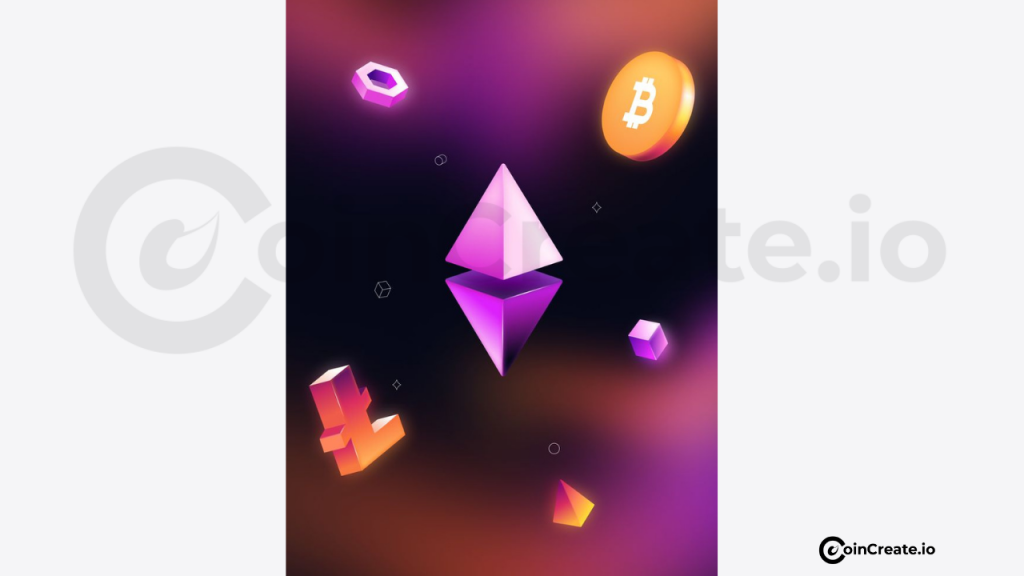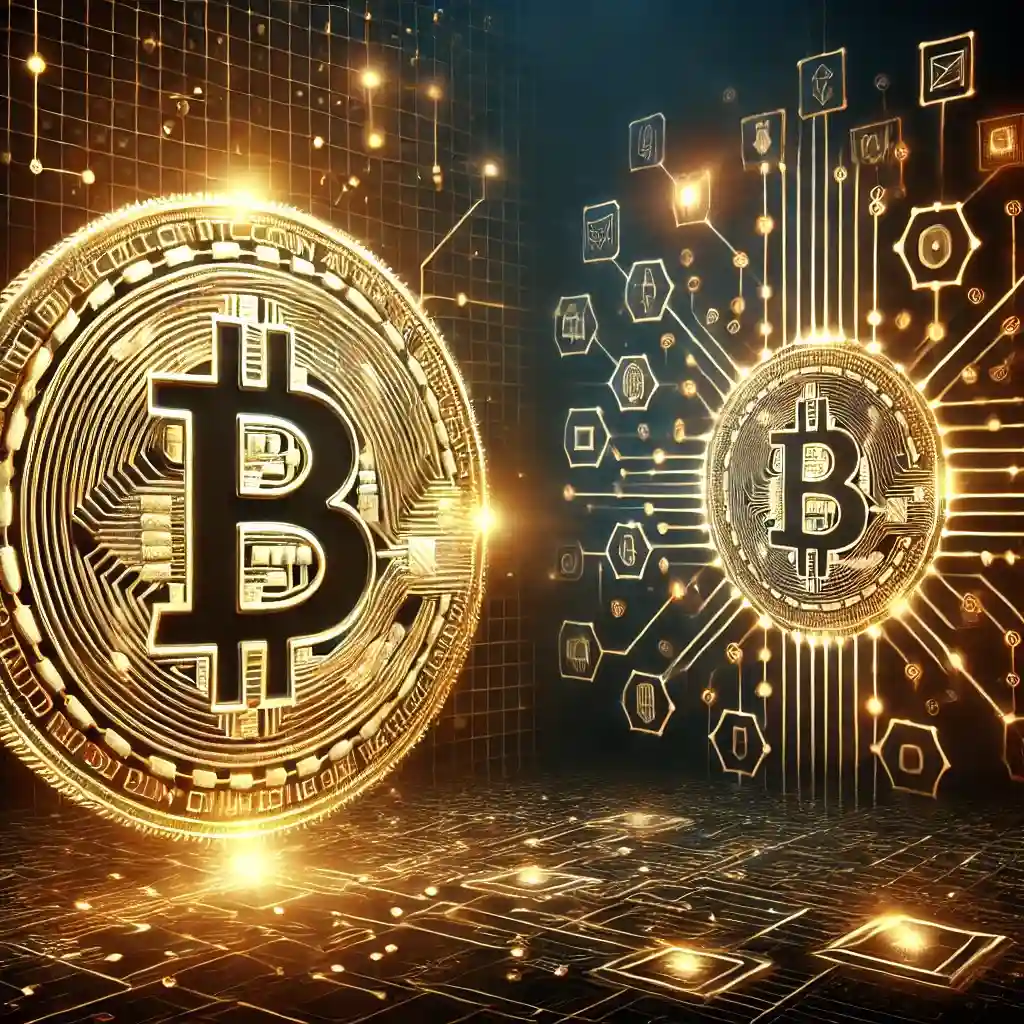What Are Real-World Assets? How RWAs Work in Crypto
Let me tell you about something that’s completely changing how we think about finance Real-World Assets (RWAs). If you’ve ever dreamed of owning a piece of luxury real estate, fine art, or even commodities like gold but thought it was out of reach, RWAs are here to change the game. These are tangible or intangible assets that exist in the physical world like real estate, bonds, or even fiat currencies and they’re being brought onto blockchain networks through a process called asset tokenization.

This isn’t just some niche crypto concept; it’s a full-blown revolution that’s bridging the gap between traditional finance (TradFi) and decentralized finance (DeFi). By making these assets digital, RWAs are unlocking new ways to trade, invest, and manage them globally. And honestly? I think this is just the beginning of something massive.
Why RWAs Are a Big Deal
So why is everyone talking about RWAs? Let me break it down for you
More Liquidity
Imagine turning something like real estate or fine art into digital tokens that anyone can trade from anywhere in the world. That’s exactly what RWAs do—they make traditionally illiquid assets accessible and tradable 24/7. No more waiting weeks to sell a property or finding the right buyer for your luxury painting.
Total Transparency
Blockchain technology is like having an open book where every transaction is recorded immutably. You know exactly who owns what and when it changed hands. This level of transparency cuts down on fraud and builds trust in a way traditional systems just can’t match.
Investing for Everyone
Here’s my favorite part: RWAs are leveling the playing field. You don’t need to be a millionaire to get into high-value markets anymore. Tokenization lets smaller investors own fractions of big-ticket items like real estate or bonds, opening up opportunities that were once reserved for institutions or wealthy elites.
DeFi’s New Superpower
With crypto yields shrinking over time, RWAs are stepping in as a fresh way to earn sustainable returns in DeFi ecosystems. Imagine earning stable yields from tokenized real estate or U.S. Treasuries instead of relying solely on volatile crypto assets.
How RWAs Enter the Digital World
Now you might be wondering how do these real-world assets actually make their way onto the blockchain? Let me walk you through it—it’s simpler than it sounds.
Tokenization The Magic Key
Tokenization is essentially turning ownership rights of physical assets into digital tokens on a blockchain. These tokens represent the value of the underlying asset and can even be programmed with features like lockup periods or investor restrictions.
Here are some examples
Real Estate: Splitting properties into fractional shares so anyone can invest in them without buying the whole thing.
Commodities: Representing gold or oil as tradable tokens on blockchain platforms.
Financial Securities: Issuing bonds or equities directly on-chain for easier access and management.
RWAs in Action
RWAs are already making waves in DeFi by introducing stable assets like U.S. Treasuries or real estate-backed tokens into the ecosystem. Platforms like MakerDAO and Centrifuge are leading this charge by offering lending services backed by these tokenized assets. This not only diversifies investments but also reduces the wild price swings we often see in crypto markets.
Blockchain: The Backbone of RWAs
What makes all this possible? Blockchain technology Let me show you how it powers RWAs
Fractional Ownership
With blockchain, you don’t need to buy an entire property or asset—you can own small fractions of it through tokenization! This democratizes access to high-value markets like luxury goods and real estate, making them available to everyday investors like you and me.
Transparency
Blockchain records every transaction immutably, providing verifiable ownership records and transaction histories for all tokenized assets. This level of transparency builds trust among investors.
Liquidity Creation
Traditionally illiquid assets like fine art or real estate can now be traded on blockchain platforms without all the red tape we’re used to seeing in traditional markets.
Platforms Making It Happen
Several blockchain ecosystems are leading the charge when it comes to integrating RWAs into digital markets
Ethereum
The go-to platform for RWA tokenization thanks to its robust smart contract capabilities.
Polygon
Known for scalability and low transaction costs—perfect for DeFi applications involving RWAs.
Algorand
Focused on institutional-grade solutions with high security.
BNB Chain
Offers scalability and cost efficiency for integrating RWAs into DeFi ecosystems.
The Benefits of Tokenizing Real-World Assets (RWAs)
Let me tell you why tokenizing RWAs is such a game-changer
1. Increased Liquidity
Tokenization allows fractional ownership of large, traditionally illiquid assets like real estate or fine art. You can trade these tokens globally without waiting weeks for transactions to settle.
2. Accessibility
Tokenization lowers barriers to entry, letting retail investors participate in markets previously reserved for institutions like luxury real estate or artwork.
3. Transparency
Blockchain provides an immutable ledger that records all transactions and ownership details, reducing fraud risks and fostering trust.
4. Cost Efficiency
Smart contracts automate processes like ownership transfers and dividend distributions, cutting out intermediaries and slashing costs.
5. Fractional Ownership
You can own small portions of high-value assets, making diversification easier and more affordable.
6. Integration with DeFi Ecosystems
Tokenized RWAs can be used as collateral in DeFi platforms, unlocking new opportunities for borrowing and lending while enhancing yield generation options.
Challenges Ahead
Of course, tokenizing RWAs isn’t without its challenges—it comes with some hurdles we need to address
Regulatory Uncertainty
Regulations around tokenized assets are still evolving, especially in jurisdictions like the U.S., where agencies like the SEC classify many tokenized RWAs as securities.
Legal Complexities
Establishing verifiable ownership of tokenized assets is tricky without clear legal recognition of blockchain records as proof of ownership.
Lack of Standards
The absence of universal standards for tokenization protocols hampers interoperability between platforms.
Security Risks
Smart contract vulnerabilities or oracle manipulation could compromise the entire tokenization process.
Real-World Assets (RWAs) in DeFi
Yield-Bearing Assets
RWAs bring low-volatility assets like bonds into DeFi ecosystems, offering predictable returns compared to volatile crypto-native assets.
Collateralization in DeFi
Platforms like Aave allow users to borrow stablecoins by collateralizing tokenized RWAs, reducing dependency on volatile cryptocurrencies.
Real-World Assets (RWAs) in Web3
Now let’s talk about Web3—the decentralized internet—and how RWAs fit into this vision.
RWAs in Web3 enable tangible assets to be managed, traded, and owned digitally without intermediaries. Imagine owning part of a luxury property directly through your Web3 wallet.
My Takeaway - The Future Is Bright but Complex
RWAs are revolutionizing finance by merging physical assets with blockchain technology. But challenges like regulatory uncertainty and security risks still need to be ironed out before mass adoption becomes reality.

